The Glasgow, Barrhead and Neilston Direct Railway line opened in 1848, well before any of the houses were built alongside. It ran from a terminus on the southside of Glasgow to Barrhead with the first stop at Pollokshaws West. The original terminus was South Side Station in the Gorbals, just south of the Brazen Head pub. There is an entrance stair still visible on Pollokshaws Road.
Strathbungo station was a later addition to the line, opening on 1 December 1877, and Crossmyloof followed even later, in 1888.
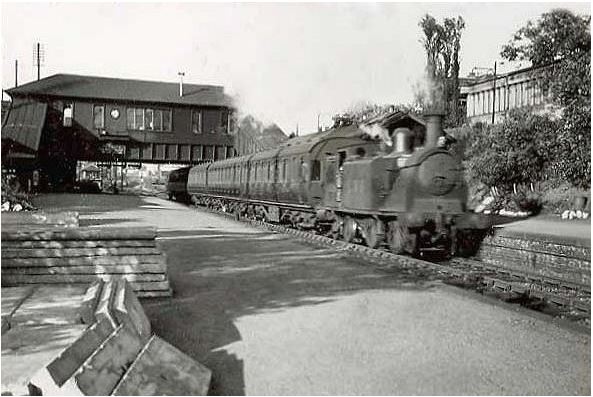
McIntosh ex-Caledonian 0-4-4T, carrying LMS no 15029 calls at Strathbumgo with an East Kilbride train in July 1948. Credit: GH Robin / Mitchell Library
Strathbungo closed to passengers permanently on 28 May 1962.

The Strathbungo footbridge and station are visible in the distance. Note the length of the overgrown platforms, reaching almost to Marywood Square. Credit: John Robin
Today little trace remains of the station at rail level, though the former booking office building on the bridge above survived for sixty years or so. Most of this time it was known as Susie’s Store, until the store closed in 2019. The building was demolished when the road bridge itself was taken down to allow for rail electrification, over the weekend of 5th-7th August 2022.
Station Statues
Both the Glasgow Guide and Hidden Glasgow discussion boards describe a statue of a horse’s head, possibly of iron, now disappeared, with unanswered appeals for further information.
Meanwhile John Devitt recalled rescuing statues or busts from the embankment during a clean up and placing them in one of the Moray Place gardens, but wasn’t sure of their fate.
In July 2018 I was passed some old Strathbungo Society documents, and the minutes describe how the stone heads were removed from the embankment on 24th August 1986 with the assistance of ScotRail (lest they be damaged during the forthcoming electrification of the line, hmm). The Society Treasurer, Mrs A Allan, reported that the heads had belonged to the Strathbungo stationmaster, who had brought them with him from his previous station in Ayr. The Coat of Arms of Ayr Harbour Station was said to include Minerva, Hercules and Neptune . Colin Duncan suggested they were Burns characters, and from the former stationmaster of Newton-on-Ayr station.
The heads were moved to the garden of Robin Haddow, a founding member of the society, on Moray Place. After a tip off, I discovered they are still there today, set into a garden wall, their provenance forgotten. One looks like Minerva, but I’m not sure of the second. I didn’t find a third. Or an iron horse.
The last passenger

Britannia 70038 Robin Hood passing Strathbungo with Carlisle train on 31st July 1964. Credit: John Robin
John Robin, as well as providing some of the steam-era photographs , has a claim to be the last passenger to ever alight at Strathbungo Station:
I had been on the last train to stop at Strathbungo in May 1962 and thought that that was that; but in November 1966 another medical student and I were on the train from Clarkston to sit an exam at Gilmorehill. As we were passing Strathbungo the diesel railcar dropped its gearbox, ran over it and derailed very noisily.
Not wishing to miss the exam and realising that the train was going nowhere we got off, jumped the wall and went across to Pollokshields West for a Circle train. As it came in we saw that a large group of the less agile passengers had got off and walked along the line towards Muirhouse and then south through the short tunnel to the station causing great consternation to the driver. We managed to sit the exam and all was well.
Post closure
After closure, the steps down to the platforms from the booking hall and the footbridge were removed, and the booking hall became a shop, Susie’s. It is likely the metalwork from the footbridge steps down to the platform were then used to extend the footbridge to Darnley Road for the first time. There is more on the footbridge elsewhere.
This scene taken from Pollokshields West Station across Darnley Road includes Strathbungo Station, the footbridge, 1-10 Moray Place and Salisbury Quadrant.
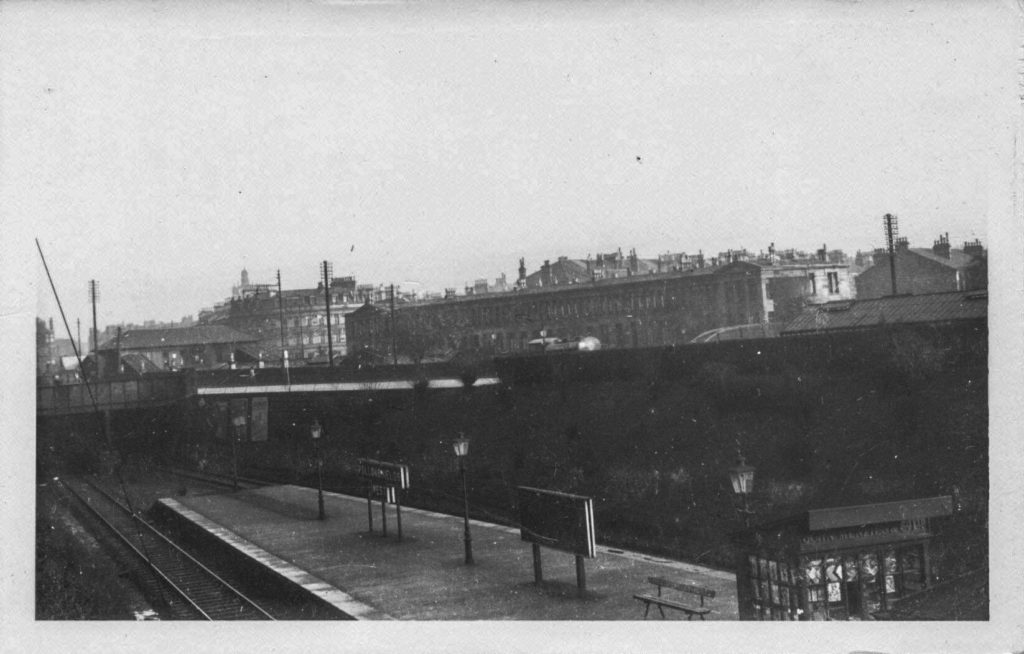
Moray Place and Strathbungo Station from Pollokshields West
Demolition
After the closure of Susie’s store in 2019, due to a combination of a hike in the lease and impending retirement, Network Rail announced with no consultation and litte warning that it was to demolish the building on 18-19 July 2020. A backlash from local resdients led them to postpone the demolition until consultation had taken place, but demolition went ahead in August 2022, primarily due to the needs of electrification of the line.

Strathbungo Station Interior prior to demolition, July 2020, shows the windows down to the tracks. The round cutout was for the station clock. Credit: John T Brown, Twitter
Article updated 20 Oct 2022.

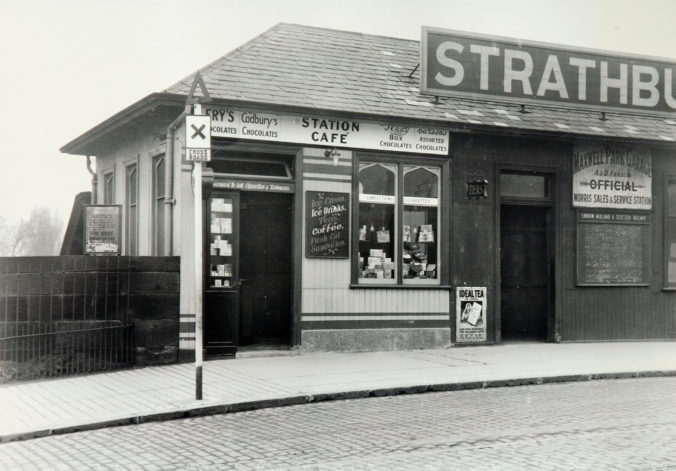


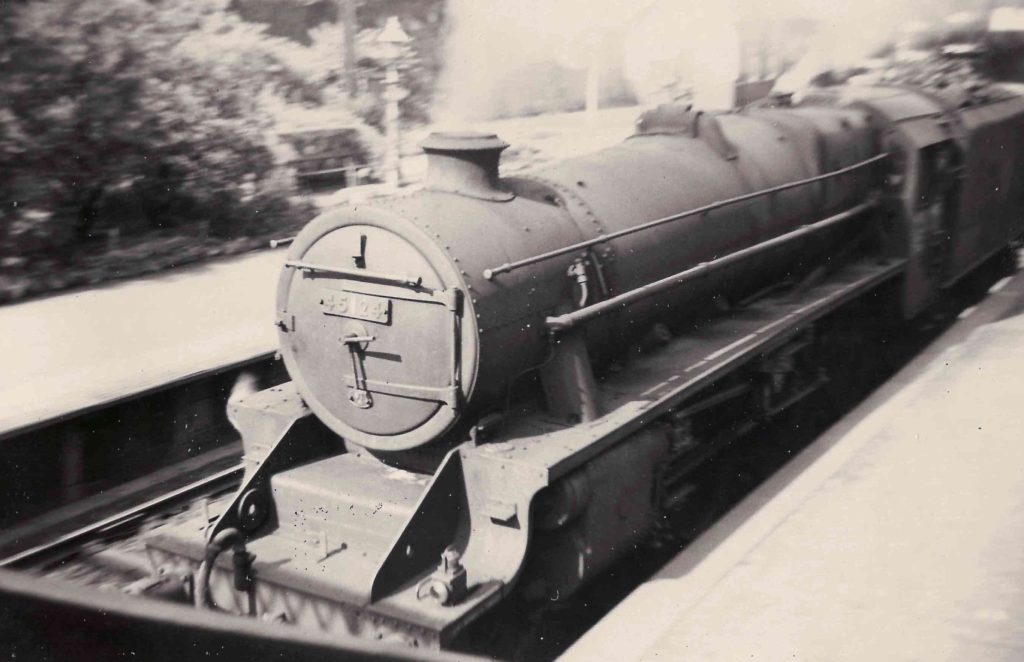
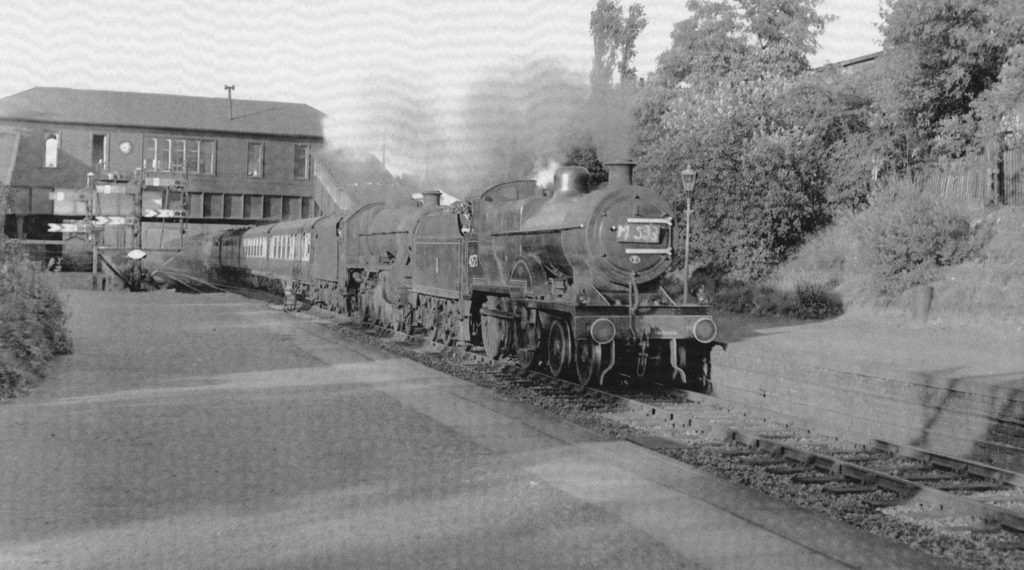

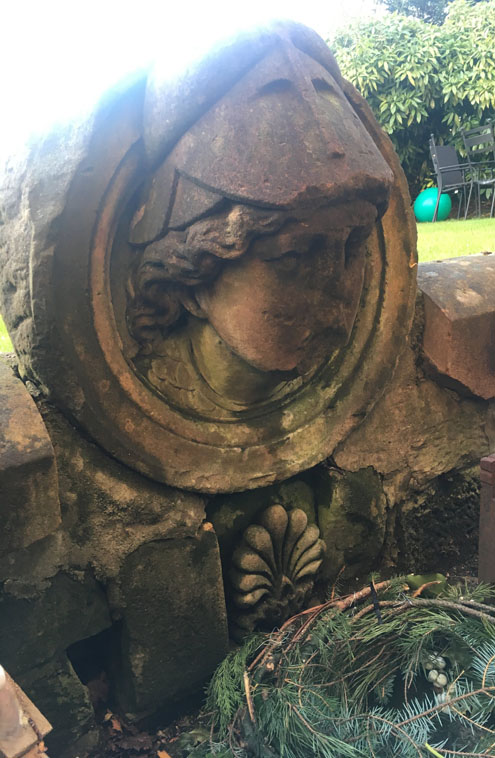


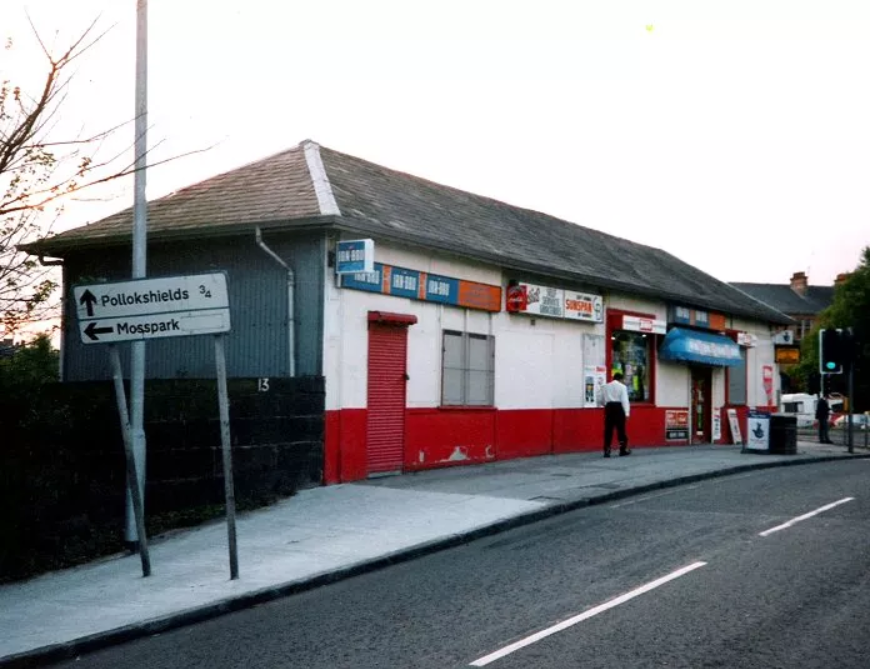
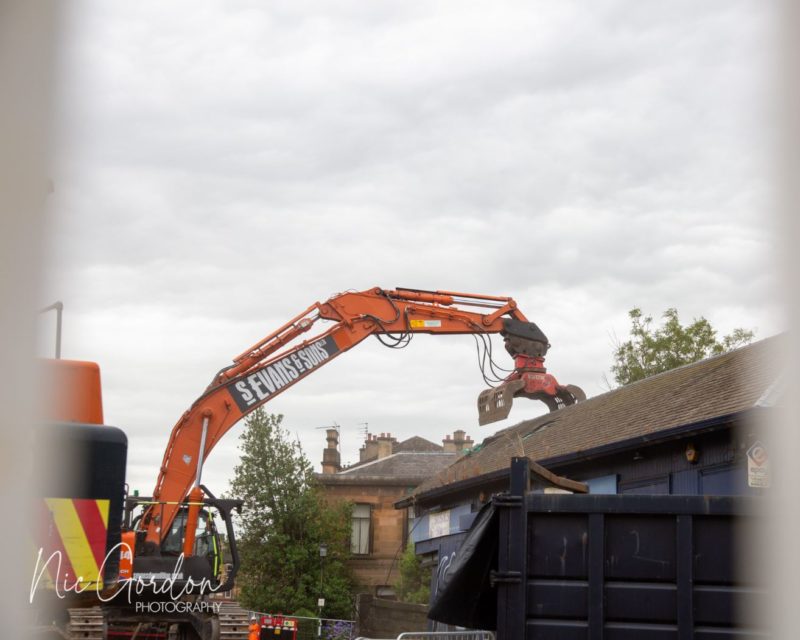

June 20, 2017 at 9:53 am
Born and bred in Strathbungo from 1948 till moving away in 1966, one thing I have been trying to find out is the story behind the iron horse’s head that adorned the north embankment of Strathbungo railway station. This had been removed since. Anyone have the history of the head??
June 22, 2017 at 11:02 am
Stephen, you should read the article on Strathbungo Station, which mentions the horse’s head. It isn’t very illuminating however, and if you ever find out any more, let me know. Andrew. [Comments subsequently moved to this article]
November 23, 2017 at 6:14 pm
Many thanks indeed even though as you say, ‘isn’t very illuminating’ so a bit perplexed as it mentioned several ‘busts or statues’ yet I only recall one, the horse’s head. Have posted another mention of this elsewhere in hope I get a positive response and certainly will let you know. As it mentions that the footbridge was build by Abbey Engineering Works of Paisley, would they have something to do with the head, I wonder?
July 29, 2018 at 11:11 am
Just updated the article with another snippet of information, though ultimately not much wiser…
January 13, 2019 at 9:17 pm
Another update with photos of the surviving statues. Still no horse.
September 19, 2019 at 10:34 pm
recollect that the head was buried more into expanding greenery after the May 1962 closure: the footbridge was altered after closure and the routes down to the platforms removed and a new link to Darnley Road created. Is it possible the horse’s head is still there? and why a horse’s head anyway………….
November 11, 2019 at 11:26 am
“Possible the horse’s head still there?” hmmm… buried around where it once was? It would be quite a heavy hefty piece to move and doubt it would have been buried in the same spot it once was. Any one willing to go over the fence and forage around with spades and garden forks?!?!
March 30, 2021 at 3:28 am
Good metal detector and operator, might detect a metal “mass” in the ground. At this stage its probably worth a try.
March 30, 2021 at 8:50 am
I pass through the now derelict station from Barrhead and always look towards where the horse’s head once was and can see no evidence of it possibly being buried there and believe that it was removed at some stage to be melted down but hopefully it hasn’t been.
July 10, 2020 at 6:35 pm
I also remember that back in the 1980s, the Labour candidate for the Regional Council had on his manifesto a promise to pursue the re-opening of Strathbungo Station and link it via the Gorbals & High St to Queen St Station; still think this would be a good idea.
August 28, 2020 at 1:54 pm
I remember well the horse’s head. Painted brown with a black mane and realistically painted eyes. I’m thrilled to see my piccy used as the station after closure one. Thanks.
March 30, 2021 at 3:24 am
I last saw the Horses head in 1963/64. I thought that it was made of stone but stand corrected as someone commenter that it was metal, cast Iron perhaps. I wonder if their might be any record of its casting at the Falkirk area Ironworks.
March 30, 2021 at 8:39 am
It was.
March 30, 2021 at 8:41 am
Well, that’s quite a coincidence. I worked at Falcon (trade name for Falkirk iron). The head was def stone though.
March 31, 2021 at 9:58 am
Deffo stone? I’m sure it was cast iron but then I was but a mere laddie about 7-8 yrs old then!
July 20, 2023 at 2:31 pm
Horse has disappeared forever by the look of things but what about the large cast iron Victorian Fountain that was in the middle of the road opposite the old Sammy Dowd. It was at the centre of a small roundabout which had been built roundabout ( ha ha) it. This structure was still in place in the early 1990s but appears to have suddenly been removed without any photos of it and the removal and ” resting place”. I tried for years to find out from GCC when it was dismantled and where did it end up, got no response, although I seem to remember that someone on this site had a sketch? of it and there was a plan of the immediate area, inc. the roundabout etc. Anyone any updated info on this.? ps. I was amazed at how few ppl on here remembered it considering we are talking about the early to mid 1990s.
September 17, 2023 at 1:41 pm
Douglas, You asked this once before. Perhaps you didn’t see the outcome. Take a look at this article https://bygone.bungoblog.com/wp/strathbungos-fountain/
It even includes the all important only known photos.